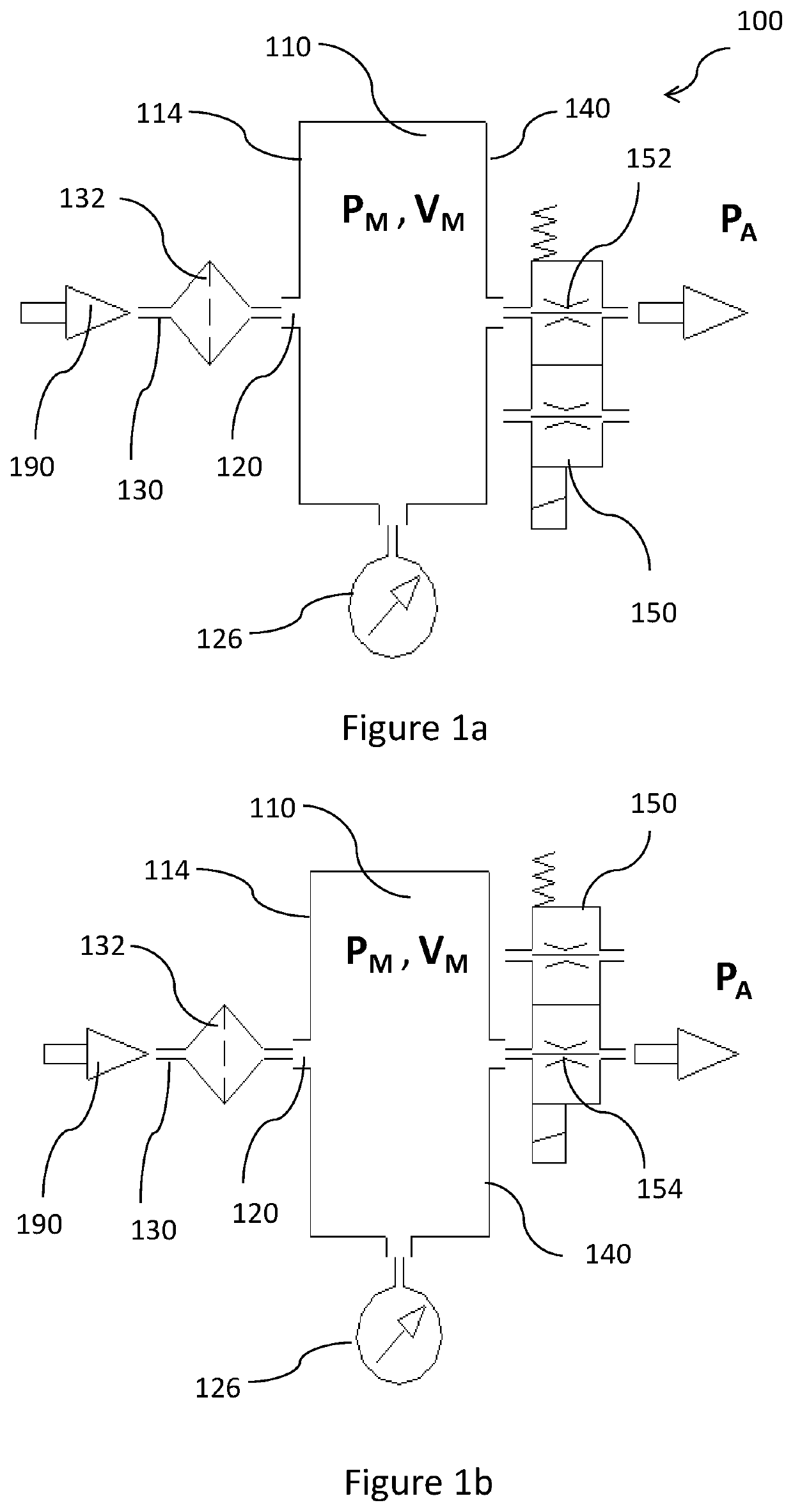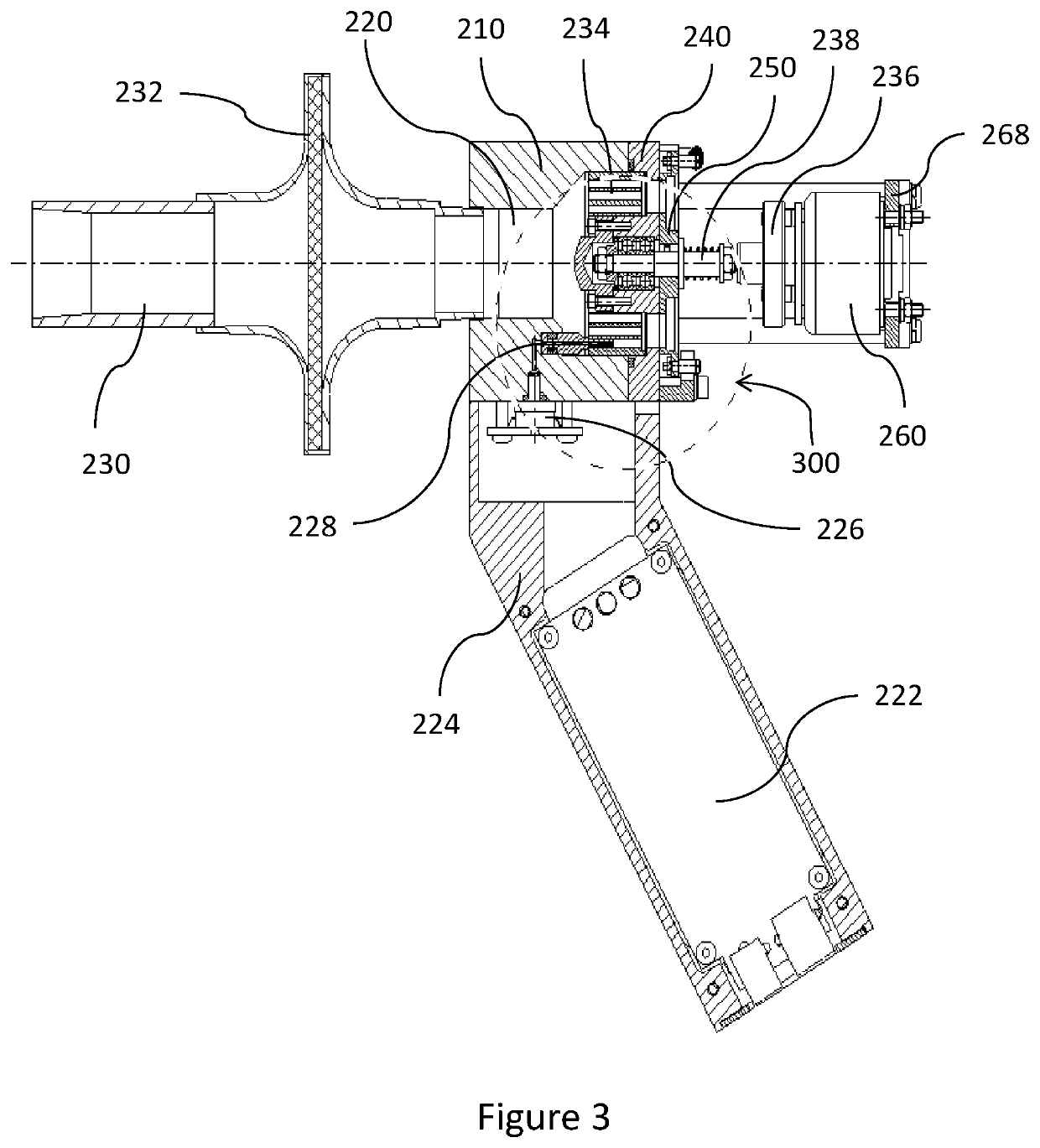Device and method for estimation of pulmonary function characteristics
- Summary
- Abstract
- Description
- Claims
- Application Information
AI Technical Summary
Benefits of technology
Problems solved by technology
Method used
Image
Examples
example 1
n of TLC Estimated by the Pulmonary Function Test Device and Plethysmograph
[0168]A trial including 45 subjects, measured by the pulmonary function test device and a full body plethysmograph, was performed to compare TLC results between both methods. The trial population included 17 healthy subjects, 17 patients with COPD and 11 patients with restrictive lung disease. The trial did not provide diagnosis, as all patients participating in the trial were clinically pre-diagnosed by conventional methods prior to participation.
[0169]The terms ‘plethysmograph’ and ‘full body plethysmograph’ as used herein are interchangeable.
[0170]A statistical analysis was performed, wherein the base indicator that reflects the correlation between two variables is a linear correlation coefficient R, given by the following formula:
R=n·∑(S·P)-(∑S)·(∑P)n·(∑S2)-(∑S)2·n·(∑P2)-(∑P)2
where n is sample size, S indicates the data estimated by the pulmonary function test device, and P indicates the data measured by ...
example 2
lity Assessment
[0176]A trial involving two subjects was performed in order to test repeatability, which is defined by the ISO as the closeness of agreement between independent test results under repeatability conditions that are as constant as possible, where independent test results are obtained with the same methods, on identical test items, in the same laboratory, performed by the same operator, using the same equipment, within short intervals of time. The first subject was a healthy 62 years old male, and the second subject was a 60 years old female suffering from chronical asthma disease. The Coefficient of Repeatability (CR) can be calculated as 1.96 times the standard deviation of the differences between Plethysmograph (P) and pulmonary function test device (S) data:
CR=1.96·∑(P-S)2m
where ‘m’ is the number of observations for each subject. As known in the art, for example in S. A. McKenzie et al, Arch. Dis. Child; 87: pp. 248-251 (2002), the CR is the value below which the abs...
example 3
sistance Estimation
[0179]A pre-clinical trial was performed on 10 voluntary patients. Estimation of the airway resistance, which is the ratio between pressure and flow, was performed for the pulmonary function test device and a plethysmograph model ZAN 500, referred to as the gold standard.
[0180]Table 4 shows the results of the airway resistance assessment for both the pulmonary function test device and the plethysmograph. The results indicate that there is a good correlation between resistance estimates of both systems for all 10 subjects. The differences in the results between the plethysmograph and the pulmonary function test device may be attributed to two major reasons: one important difference between said device and the plethysmograph is that said device estimates the bronchial airway resistance value, while the plethysmograph enables measurement of the total airway resistance, and another difference between the two systems is that for said device, the resistance is calculate...
PUM
 Login to View More
Login to View More Abstract
Description
Claims
Application Information
 Login to View More
Login to View More - R&D
- Intellectual Property
- Life Sciences
- Materials
- Tech Scout
- Unparalleled Data Quality
- Higher Quality Content
- 60% Fewer Hallucinations
Browse by: Latest US Patents, China's latest patents, Technical Efficacy Thesaurus, Application Domain, Technology Topic, Popular Technical Reports.
© 2025 PatSnap. All rights reserved.Legal|Privacy policy|Modern Slavery Act Transparency Statement|Sitemap|About US| Contact US: help@patsnap.com



